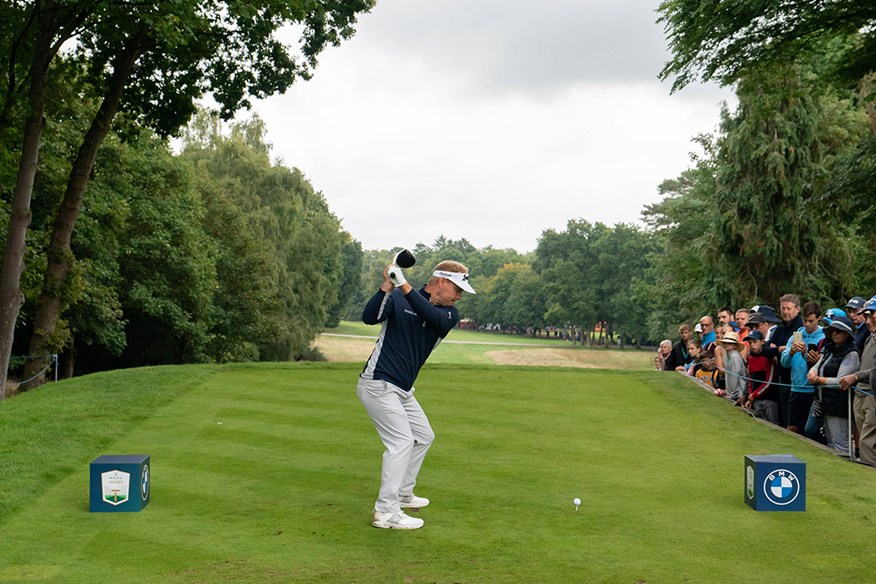Struck by the yips, this DP World Tour player feels “scared” he’s going to miss the ball
Last updated:
In a fascinating interview, Soren Kjeldsen tells all about his struggles off the tee, the support he received from a Ryder Cup star, and why he’s walking away from the DP World Tour as the third-highest appearance maker of all time
All good things must come to an end. After 27 years and 712 appearances on the DP World Tour, Soren Kjeldsen is waving goodbye. The Dane has just wrapped up his final full season on the European circuit and he is already making plans for the future.
Next month he’ll be heading to America for Champions Tour Qualifying with a view to playing on the seniors circuit once he turns 50 in May. Ahead of his next career move, Kjeldsen granted us an hour-long interview and opened up about his battles with the yips off the tee, the loneliness he felt competing on the PGA Tour for six months, and the one email and book that helped reignite his golf career.
Q. You’re one of just four players who have made over 700 starts on the DP World Tour. The others are David Howell, Miguel Angel Jimenez and Sam Torrance. That’s pretty good company to be in, right?
That’s very good company and there are not many ahead of me. Obviously very grateful and very proud of that because just being able to compete on the European Tour has been a dream for me.
Q. Your longevity is even more impressive considering your amateur career was pretty unremarkable. Is that a fair assessment?
Yep, I didn’t really have much of an amateur career. I started playing OK when I was probably 15, 16. I played the British Boys’ (Amateur Championship) once and I played the Eisenhower Trophy once at Paris National as well. That was the first time I saw Tiger, actually. I also remember getting my ass kicked by David Howell that week. I then played the Eisenhower Trophy in ’94 and turned pro at 19 in January 1995. It happened quite quick.
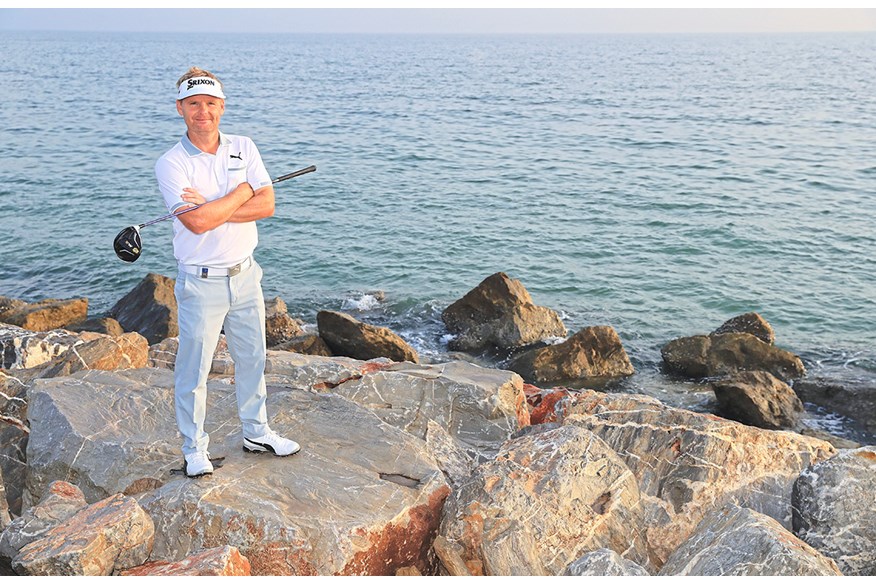
Q. How hard was it, growing up in Denmark, dealing with the long winters and short hours of daylight?
Not easy. You were waiting for the 1st of April; that’s when the season started. There were five or six months of doing very little. We did a little practice indoors, but I couldn’t really hit balls into a net. I would hit five shots and get bored. I needed to play.
Q. When did you really catch the golf bug?
When I was 11, that was probably the first time I thought, imagine if I could do this for a living. I remember my brother taking me to the cinema to watch a 90-minute summary of the Majors. Some people love going to watch Disney but for me that was an unbelievable world to have a little peek in at.
Q. Can you remember the first golf tournament you attended as a fan?
I played a junior tournament down in Biarritz in southern France in ’92. The union arranged for us to stop at Le Golf National on the Sunday and I walked all 18 holes with Nick Faldo, who was leading the tournament. I still remember how he was dressed and all his mannerisms.
It was the best day of my life. Miguel Martin holed a long putt on 18 and eventually won the tournament. I remember this huge roar going up and thinking, this is the coolest thing ever. I just wanted to be part of it.
Q. What was it like then for a 20-year-old trying to make a living on the Challenge Tour?
It was a dream. I was 19 when I went to the Asian Tour Qualifying School and I missed that one. In ’95, we had four Challenge Tour events in Denmark and I got into those. I played half decent, so I got a category for the next year, and that’s how I got onto the Challenge Tour. I didn’t have a great year in ’96 but I came through the top 15 the following year to earn my European Tour card.
Q. How did you deal with the financial pressures as a fledgling tour pro?
I got a loan from my parents for £3,000 and I paid them back at the end of ’97. Apart from that, I just played pro-ams and made a little bit of money. I actually didn’t get a car until August ’98, which was my first year on the main tour. Before that it was buses and trains. It’s easy to look back now and think, that must have been tough, but it didn’t feel tough. It was an adventure.
Q. How long did it take you to feel like you really belonged at that level?
The first year on the European Tour wasn’t that easy. I played decent in the British Masters, the second to last tournament for me, then went to Belgium and missed the cut by a shot. I went into the telephone booth, called my parents, and was like, “Shit, this is not good. I’m going to lose my card.”
I remember looking anxiously at the standings all weekend, and I ended up hanging on. I think 116 was the last man in, and I finished 115 so I just regained my card. The next year, I got off to a good start, finishing second in Qatar to Paul Lawrie, and I would say that was the first time I felt like I properly belonged.
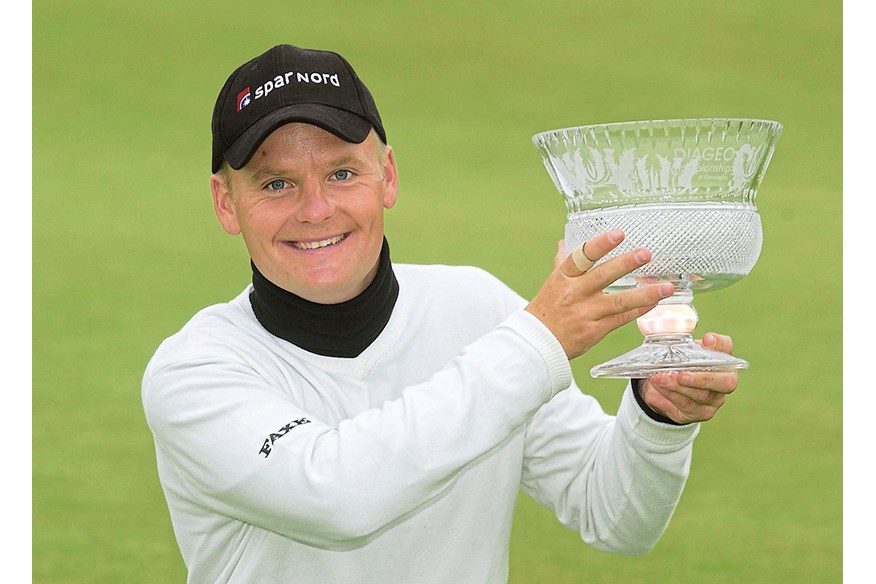
Q. You had to wait until 2003 for your first victory, at Gleneagles in the Diageo Championship. Was it too long?
No, I don’t think so. I mean, obviously I wanted it badly, but I also knew where I came from. I was never that great as an amateur. Getting on tour was my dream so I was always like, “Let’s see how far we can get.” When it happened, it was a great time in my life as well. My wife was pregnant with our first child, we had just moved to the UK, in Ascot, and my game was getting better and better. It was a very special win for me. Charlotte and I went down to London after everything was finished and I remember getting up at 3am and turning on the lights, just to check that the trophy was still there.
Q. There was a three-year stretch, 2007 to 2009, where you were building some good consistency. Then you discovered your former business manager had been stealing from you. What happened there?
He was a guy that I got to know when we moved to the UK. He became a friend, and then after that he took over my management stuff. He had all the dealings with the sponsors and I was naive. The sponsors paid my fees into his account and he was supposed to take his cut before moving them into my account.
When the financial crisis hit in 2008, he had a few problems with his businesses and suddenly all my money was gone. I went to the police and there was so much going on at that time. In the end they didn’t do anything about it. Financially it was terrible and my game declined after that as well. I struggled with trust in myself and with people, and it took me a little while to get over. Thank God, I never think about it any more.
Q. How much money are we talking?
It was a lot.
Q. Six years later, you celebrated one of your most memorable wins at the Irish Open. You made hard work of it though.
(Laughs) I did. It was one of those where I had a million thoughts going through my head. It was like a three, maybe four-foot putt. My mind was racing, heart was pumping and I hit the putt so hard and pulled it. How it went in I still don’t know. If you watch it back, it went right the way around the hole!
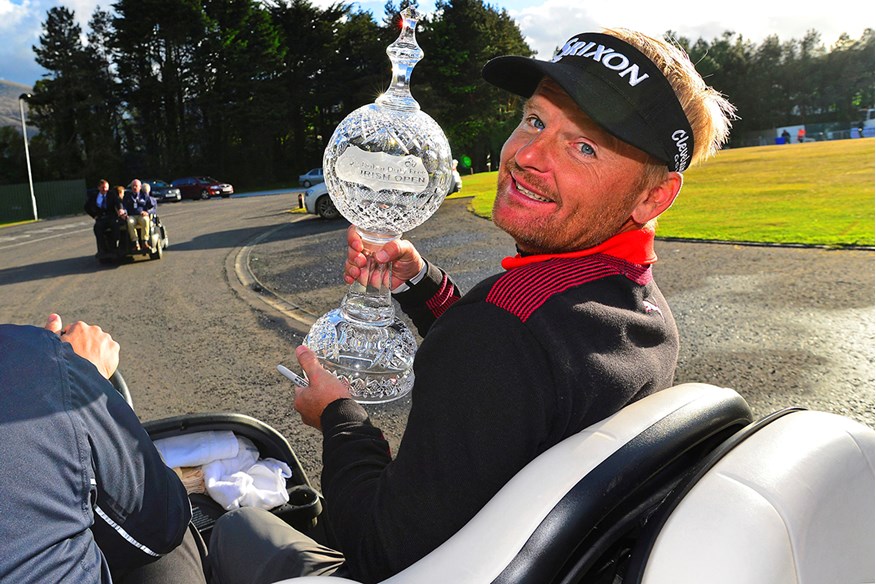
Is that the most nervous you’ve ever felt?
No, because of the trust issues I had after ’09, I had a lot of panicky feelings on the tee. That’s something that has never really left me. I cope with it pretty well and sometimes it doesn’t affect me, but sometimes it still does. I’ve been on tees with my driver where I’m scared I’m going to miss the ball.
Q. Really? Is that like the yips?
Oh, absolutely. It was like a different league of panic, a black cloud. Robert Karlsson heard I was struggling with this and wrote me a long, long email telling me how he experienced exactly the same thing: he couldn’t pull the club back, he just froze over the ball. But he got over it.
What I realized was, the moment you start talking about these things and realize that it’s not that uncommon, the panic sort of loses its strength a little bit.
What I learned through working with Bob Rotella is that when we get into our mind, we try to control movement and this kind of thing can happen. But once you stop evaluating and controlling all this stuff, the panic disappears and you can discover the enjoyment again. It’s something I’m quite passionate about. I learned that you just need to treat it like any other challenge.
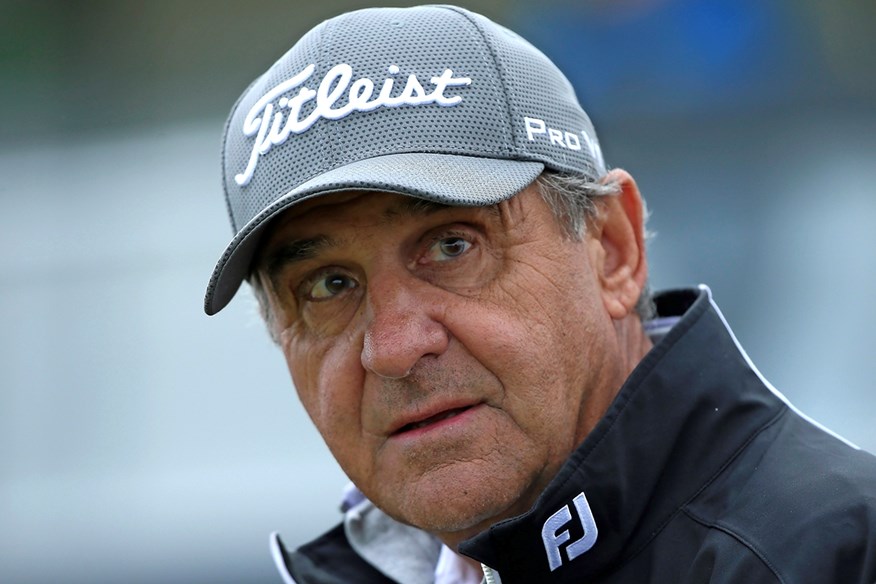
Q. So many players are a pupil of Bob Rotella. What’s so special about him?
I read his book Golf Is Not A Game Of Perfect in ’97 and I loved everything about it. I’d never heard anybody talk about giving up control to gain control but it made sense. I was always trying so hard, so when somebody tells you that you might play better if you just let go by five percent, that helped me to get more freedom into my game.
I met Bob at Doral in ’06 and I still speak to him now. I was reading his book the other day again actually. It’s one of those books you keep going back to. When you get to 49 and think about all the stuff you’ve tried and worked on, that book I read back in ’97 pretty much says it all. If I’d just stuck to that, I might have played better.
Q. What did he give you that you didn’t already have?
In golf, you’re always trying to get better and make changes. But we can also get in our own way and try to control too much. What Bob taught me was that the way you played when you were 10 years old, it’s not far off how you play at your best. When the game stays a game and you look at the target and just let the shots go, that’s when you produce unbelievable golf.
It’s funny, because every time human beings have a problem, we try to think our way through it. We try to come up with a plan, and it’s all very rigid. And when it comes to movement and playing golf, it’s not the most effective way. That’s really what he teaches and coaches. No wonder he’s had so much success.
Q. Are you a leaderboard watcher?
Generally, no. I remember looking at the leaderboard on 11 that day in Ireland, but that’s one of the things Rotella talks about as well. If you can disappear into your own little world and make the right decisions, then it will all add up when you finish. I’ve certainly tried to do that over the years.
Q. Playing devil’s advocate though, imagine if you need a birdie on the 18th to win. Wouldn’t it make sense to know that beforehand, rather than playing safe to the middle of the green and two putting for par from, say, 40ft?
Yeah, but I don’t play like that. To me, that’s how an accountant plays. I can’t just hit to the middle of the green. I play by instinct. If I’ve got an 8-iron in my hand, I can’t help hitting at the pin. It doesn’t matter if it’s only six feet from the water. My instinct takes over. That’s one of the first things I tell my caddie. Don’t tell me to hit it six feet right of the pin because there’s water over there or whatever. I can’t do it. If I can see the flag, I’m going for it.
Q. But surely, if you’ve got a 4-iron in your hand, wouldn’t you play for the center if the hole is cut tight on a corner?
It’s not a conscious decision. I think I would hit the best possible shot. I don’t like to interfere with that and play from such an analytical starting point. I get on the tee and my body and senses will tell me what to do.
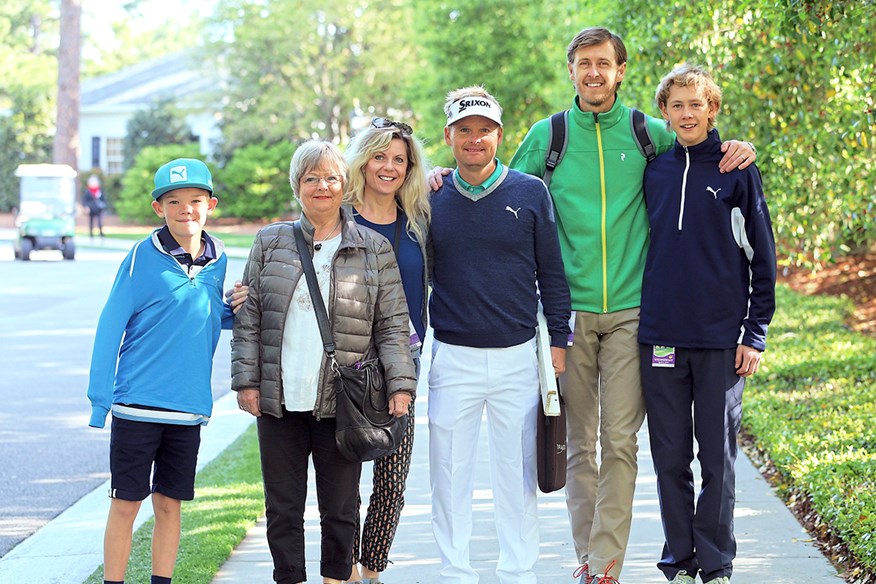
Q. You do tend to thrive on tough courses and in less-than-ideal weather conditions. Why is that?
The way that my game is, I tend to hit it relatively straight and I’m a good iron player with a good short game. On easy golf courses, it’s a huge advantage to hit it a long way. But for me, I benefit from tough conditions where if a player hits a wayward shot, they might lose a golf ball. I’m good at making pars and plodding my way around.
Q. You’ve arguably been disadvantaged by the move towards super-long golf courses. Has an element of skill gone out of the game because of it?
No, I don’t think so. I think people don’t realize how much skill there is in hitting a five-yard draw 350 yards under the gun. You’ve got to have great technique, great nerve, and play with amazing freedom.
I was watching On The Range with Bryson and he said he forgets what’s out there and gets into his own little place. Mentally, you’ve got to be really strong and that’s a real skill. I don’t want to be the old fart saying everything was better before, because I don’t think that’s necessarily the case.
Q. If you were starting out now, do you think you’d have had the same level of success and longevity as you have had?
I do, because I would have got into the gym when I was 12. In reality, I got into the gym when I was 39! My son turned pro this year and he’s 20. Two years ago he had a swing speed of around 107mph. He started doing what everyone else is doing with speed work and going to the gym every day. Now he’s swinging at 121mph.
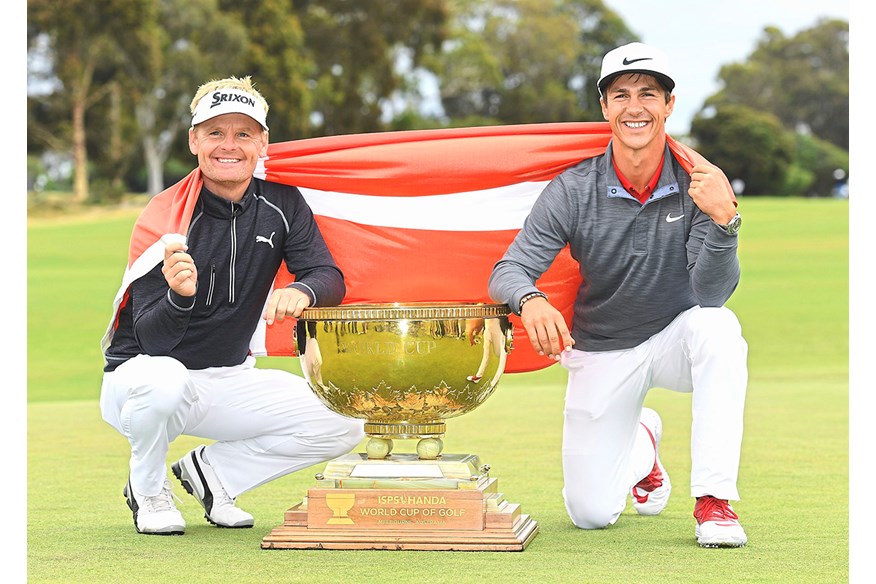
Q. You’ve played in a lot of team events over the years, including the Eisenhower and the World Cup of Golf. Is it a regret that you never got to experience the Ryder Cup?
Yeah, of course. I got close twice. I had the call from Darren Clarke (in 2016) and Nick Faldo (in 2008). I would have loved to have experienced it. I’m incredibly grateful for what I have achieved so I don’t sit around thinking it was a shame that I didn’t play in a Ryder Cup, but it was one of the goals.
Q. In 2016, you were well in contention after two days of The Open Championship at Royal Troon before Phil Mickelson and Henrik Stenson raced away. How was it for you in that final round, knowing that you were effectively playing for third?
I wasn’t too worried about that. Had I finished third, I would have been very happy. But I didn’t (he finished tied for ninth). That duel they had is probably one of the best I’ve ever seen in my lifetime. I don’t think I’ve seen two players play that well head-to-head. It was a one-in-a-million performance from both of them and we witnessed two at the same time. It was extraordinary.
Q. In 2017, you spent your first – and only – season on the PGA Tour. How did you find that adjustment?
That was tough for me. I was 42 at the time. It was always my dream to play on the PGA Tour. Everything about the golf, the tournament, and the courses was amazing. But when I left the gate it was torture. I was on my own. I was eating food out of a brown bag. It seemed like I was going back to the same hotel. One week I would have a view over the parking lot, the next week it would be over the motorway. Those were the two options for rooms. For me, it was lonely.
I spent a bit of time with Shane Lowry and he was great to me. We shared a house a couple of times but apart from that it was tough with three young kids at home and suffering with jet lag. I’m still incredibly happy I did it, but I only lasted six months and then came back.
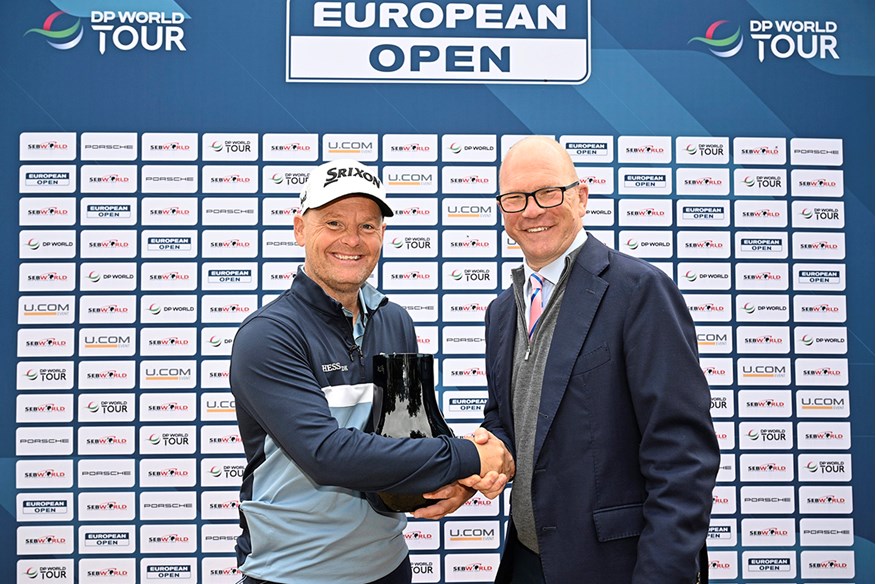
Q. When you reflect on your time as a DP World Tour member, does it fill you with sadness that it has come to an end or are you just grateful for everything you’ve experienced?
Both. There was a time, about three months ago, when it was more sadness, but that’s why I had a bit of a break, just to gather my thoughts. I wanted to play on the Tour forever, but nothing lasts forever. Now I feel like I’ve had 27 wonderful years and I’m getting ready for the next chapter.
Q. How long do you see yourself playing for?
I haven’t got a limit on it. I would love to play in America and play the Legends Tour in Europe as well. I can see myself playing until I’m 55 at least and then we’ll see how the body and hunger are. But right now I feel like I’m 25. I want to get out there and continue to improve my game.
-
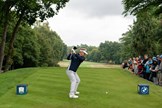 Soren Kjeldsen has battled through the driver yips for the last 15 years.
Soren Kjeldsen has battled through the driver yips for the last 15 years.
-
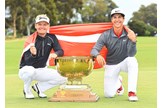 Danish pair Thorbjorn Olesen and Soren Kjeldsen won the World Cup of Golf together in 2016.
Danish pair Thorbjorn Olesen and Soren Kjeldsen won the World Cup of Golf together in 2016.
-
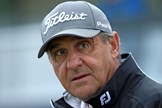 Golf psychologist Bob Rotella is a legend in his field.
Golf psychologist Bob Rotella is a legend in his field.
-
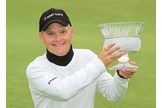 Soren Kjeldsen won his first DP World Tour title at the 2003 Diageo Championship at Gleneagles.
Soren Kjeldsen won his first DP World Tour title at the 2003 Diageo Championship at Gleneagles.
-
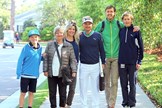 A family affair at the Masters for the Kjeldsens.
A family affair at the Masters for the Kjeldsens.
-
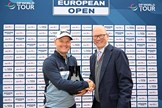 Soren Kjeldsen leaves the DP World Tour as the third-highest appearance maker of all time.
Soren Kjeldsen leaves the DP World Tour as the third-highest appearance maker of all time.
-
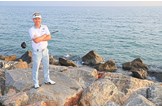 Soren Kjeldsen won four times on the DP World Tour and reached a career-high 31st in the World Ranking.
Soren Kjeldsen won four times on the DP World Tour and reached a career-high 31st in the World Ranking.
-
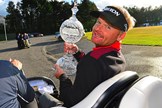 After six years without a victory, Soren Kjeldsen beat Eddie Pepperell and Bernd Wiesberger in a play-off at the 2015 Irish Open.
After six years without a victory, Soren Kjeldsen beat Eddie Pepperell and Bernd Wiesberger in a play-off at the 2015 Irish Open.
